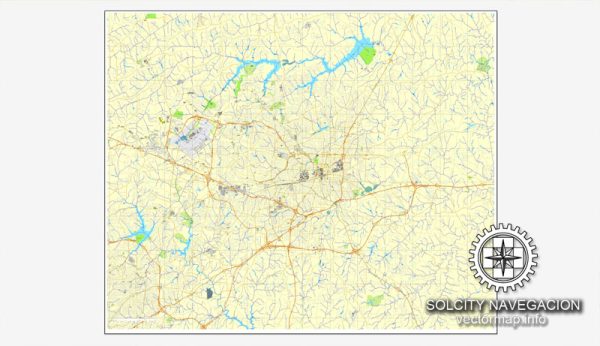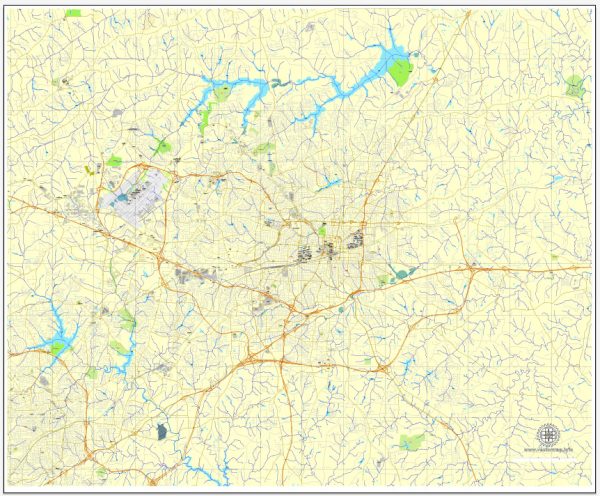Greensboro, North Carolina, has a rich history of urban development that reflects the broader trends in American urbanization. The city’s growth and transformation over the years have been shaped by various economic, social, and political factors. Here is a brief overview of the history of urban development in Greensboro:
- Early Settlement and Growth (18th and 19th centuries):
- Greensboro was first settled in the late 18th century and officially incorporated in 1808.
- The city’s early growth was influenced by its location as a transportation hub, with roads converging in the area.
- The establishment of the North Carolina Railroad in the mid-19th century further boosted Greensboro’s economic development and population growth.
- Civil War and Reconstruction Era:
- Greensboro played a significant role during the Civil War, serving as a Confederate supply depot and a site for the surrender negotiations in 1865.
- The post-war Reconstruction period brought challenges, but the city eventually recovered and continued to develop economically.
- Industrialization (Late 19th and Early 20th centuries):
- The late 19th and early 20th centuries saw significant industrialization, with textile mills and tobacco factories becoming prominent.
- Industries, such as Cone Mills and Lorillard Tobacco Company, played a crucial role in shaping Greensboro’s economy and urban landscape.
- Civil Rights Movement:
- Greensboro was a key battleground during the Civil Rights Movement. The 1960 Greensboro sit-ins at Woolworth’s lunch counter, where African American students protested racial segregation, garnered national attention.
- The city played a pivotal role in the struggle for civil rights, and this period had a lasting impact on the social fabric of Greensboro.
- Post-World War II Suburbanization:
- Like many American cities, Greensboro experienced suburbanization in the post-World War II era, with the development of suburban neighborhoods and shopping centers.
- The expansion of the interstate highway system further facilitated suburban growth and influenced the urban form of Greensboro.
- Economic Diversification (Late 20th century):
- In the latter half of the 20th century, Greensboro diversified its economy beyond textiles and tobacco, attracting industries such as finance, transportation, and healthcare.
- The growth of educational institutions like the University of North Carolina at Greensboro also contributed to the city’s economic and cultural development.
- Contemporary Urban Development:
- Greensboro continues to evolve with ongoing urban development projects, revitalization efforts, and a focus on creating vibrant downtown areas.
- The city has invested in cultural and recreational amenities, including museums, parks, and entertainment venues, to enhance the quality of life for residents and attract visitors.
The history of urban development in Greensboro reflects the broader patterns of American urbanization, from its early agrarian roots to industrialization, suburbanization, and contemporary efforts to create a dynamic and inclusive urban environment.



 Author: Kirill Shrayber, Ph.D.
Author: Kirill Shrayber, Ph.D.